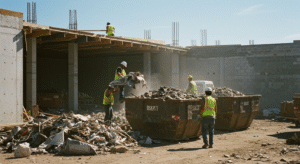
The Rise of Eco-Friendly Roofing: Sustainable Options for Homeowners
When it comes to home improvement, one area that’s been seeing a lot of innovation and growing interest is eco-friendly roofing. As homeowners become more conscious about their environmental footprint and long-term energy savings, sustainable roofing is rising in popularity. Today, roofing isn’t just about protecting your home from the elements — it’s about reducing your impact on the planet and making smarter financial choices.
Whether you’re building a new home or replacing an old roof, understanding the benefits of eco-friendly roofing options can help you make a more informed, sustainable decision.
In this guide, we’ll walk you through:
-
Why eco-friendly roofing is gaining momentum
-
The top sustainable roofing materials
-
How eco-roofs can save you money over time
-
Why working with a professional like Burton Roofing matters
-
And answers to common homeowner questions
Why Eco-Friendly Roofing Is on the Rise
The shift toward sustainable roofing is driven by three major factors:
1. Environmental Awareness
More homeowners are concerned about how their choices impact the environment. Traditional roofing materials often end up in landfills and require significant energy and resources to produce. Eco-friendly alternatives help reduce waste, lower emissions, and support a healthier planet.
2. Energy Efficiency
Eco-friendly roofs often offer better insulation, reflect more sunlight, and reduce the need for heating and cooling. Over time, this lowers energy bills and decreases the demand on power grids.
3. Financial Incentives
There are increasing rebates, tax credits, and other government incentives for homeowners who install energy-efficient roofing. Long-term energy savings and potential increases in home resale value make the investment even more appealing.
Top Eco-Friendly Roofing Options for Homeowners
Let’s explore some of the most popular and effective sustainable roofing materials you can consider for your home.
1. Metal Roofing
Why it’s eco-friendly:
Metal roofs are typically made from recycled materials (such as aluminum or steel), and they can be fully recycled at the end of their lifespan — which can exceed 50 years.
Benefits:
-
Reflects sunlight, keeping homes cooler in summer
-
Extremely durable and low maintenance
-
Available in a variety of modern styles and colors
Best For: Homeowners looking for a long-lasting, recyclable option with a modern aesthetic.
Tip from Burton Roofing: “We often recommend metal roofing for clients who want both longevity and energy savings. Plus, they look fantastic on a wide range of home styles.”
2. Cool Roofs
Why it’s eco-friendly:
Cool roofs are designed to reflect more sunlight and absorb less heat than traditional materials. They’re usually made from special reflective coatings or materials like white membrane, coated metal, or certain shingles.
Benefits:
-
Reduces roof surface temperature by up to 50°F
-
Lowers indoor temperatures, reducing the need for AC
-
Extends the lifespan of the roof
Best For: Homeowners in warm climates or those looking to boost energy efficiency.
3. Green (Living) Roofs
Why it’s eco-friendly:
Green roofs are literally covered in vegetation, including grasses, flowers, and even small shrubs. These living systems help absorb rainwater, reduce heat, and improve air quality.
Benefits:
-
Provides natural insulation
-
Supports biodiversity and pollinators
-
Reduces stormwater runoff
-
Aesthetic appeal for urban homes
Best For: City dwellers or eco-conscious homeowners with flat or slightly sloped roofs.
4. Clay and Concrete Tiles
Why it’s eco-friendly:
Made from natural, abundant materials, clay and concrete tiles are long-lasting and energy-efficient. These tiles often have reflective coatings that keep homes cool.
Benefits:
-
Fire-resistant
-
Durable — often lasting 50+ years
-
Available in many colors and shapes
Best For: Homes in hot or fire-prone regions.
5. Recycled Shingles
Why it’s eco-friendly:
These shingles are made from repurposed materials like rubber, plastic, and wood fiber. They mimic the appearance of traditional shingles but reduce landfill waste.
Benefits:
-
Highly durable and long-lasting
-
Cost-effective
-
Keeps waste out of landfills
Best For: Homeowners seeking a traditional look with modern sustainability.
6. Solar Shingles
Why it’s eco-friendly:
Solar shingles are photovoltaic systems that look like traditional roofing tiles but generate solar power for your home.
Benefits:
-
Produces clean energy
-
Reduces electricity bills
-
Adds value to your property
Best For: Homeowners interested in going solar without bulky panels.
Note: While initial installation can be costly, solar incentives and long-term savings often make up for the upfront investment.
How Sustainable Roofing Saves You Money
One of the biggest misconceptions about eco-friendly roofing is that it’s too expensive. But when you look at total cost of ownership, sustainable roofs often outperform conventional options.
Here’s how:
-
Lower Utility Bills: Cool and metal roofs reflect heat, reducing energy use.
-
Longer Lifespan: Many eco-roofing materials last 40–70 years, reducing replacement costs.
-
Maintenance Savings: Durable materials require fewer repairs.
-
Government Incentives: Tax credits and rebates may be available for energy-efficient installations.
Burton Roofing’s Commitment to Sustainable Roofing
Choosing the right contractor is just as important as choosing the right roofing material.
Burton Roofing understands the shift toward sustainability and offers a full range of eco-friendly roofing solutions tailored to your home, budget, and environmental goals.
Here’s why homeowners trust Burton Roofing:
-
Experienced Guidance: Their team helps you choose the best materials for your climate and needs.
-
Skilled Installation: Proper installation is crucial for maximizing energy efficiency and durability.
-
Eco-Conscious Practices: They recycle old materials when possible and source from sustainable suppliers.
-
Local Knowledge: They’re familiar with local codes, weather patterns, and energy rebates in your area.
Whether you’re planning a full roof replacement or just exploring your options, working with a certified, environmentally conscious company like Burton Roofing makes the process stress-free and rewarding.
Factors to Consider Before Choosing an Eco-Friendly Roof
Before making the switch, take these into account:
1. Your Climate
Some materials perform better in certain climates. For example, cool roofs are ideal for hot, sunny regions, while metal roofs are great for areas with snow or high winds.
2. Roof Slope and Structure
Green roofs require a flat or low-slope roof with strong structural support. Metal and recycled shingles work well with most standard designs.
3. Budget
Upfront costs vary widely. Clay tiles and solar shingles can be pricey, while recycled shingles or metal roofing offer good long-term value.
4. Aesthetic Preferences
Some eco-roof options offer more flexibility in color, shape, or texture to match your home’s architectural style.
Final Thoughts
The rise of eco-friendly roofing reflects a powerful shift in how homeowners think about their homes, not just as shelters, but as smart, sustainable investments in the future.
Whether you’re aiming to cut energy bills, reduce environmental impact, or simply want a roof that will last, there’s an eco-friendly solution that fits your needs. And with expert guidance from Burton Roofing, you’re not just getting a better roof — you’re building a better tomorrow.
FAQs
1. How long does an eco-friendly roof last?
It depends on the material. Metal roofs can last 50+ years, clay tiles up to 100 years, and recycled shingles typically 30–50 years with proper maintenance.
2. Is an eco-friendly roof more expensive?
Some materials have a higher upfront cost, but they often last longer and save money on energy bills, reducing your total cost over time. Incentives and tax credits can also offset the investment.
3. Can Burton Roofing help with green or solar roofing?
Yes! Burton Roofing offers a range of sustainable options, including metal, cool, and solar roofing. Their experienced team can walk you through the benefits of each and help you choose what’s right for your home.




